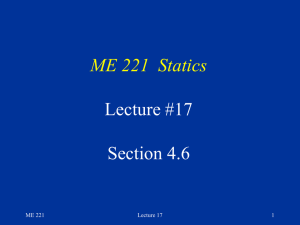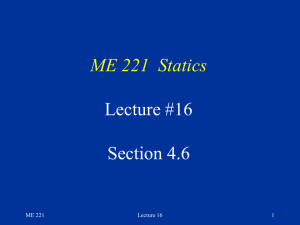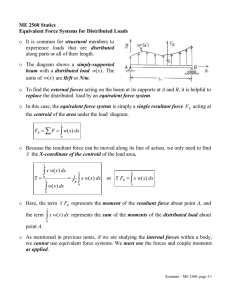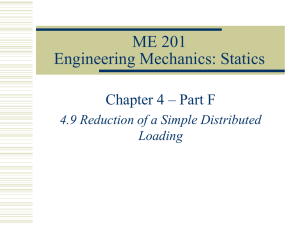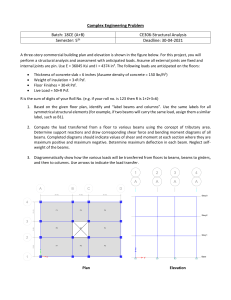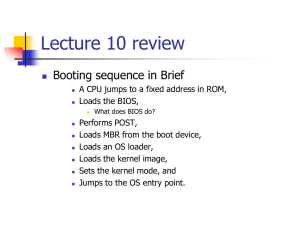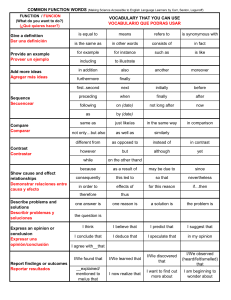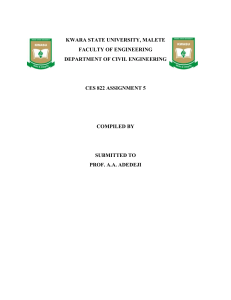Distributed Loads on Beams
advertisement
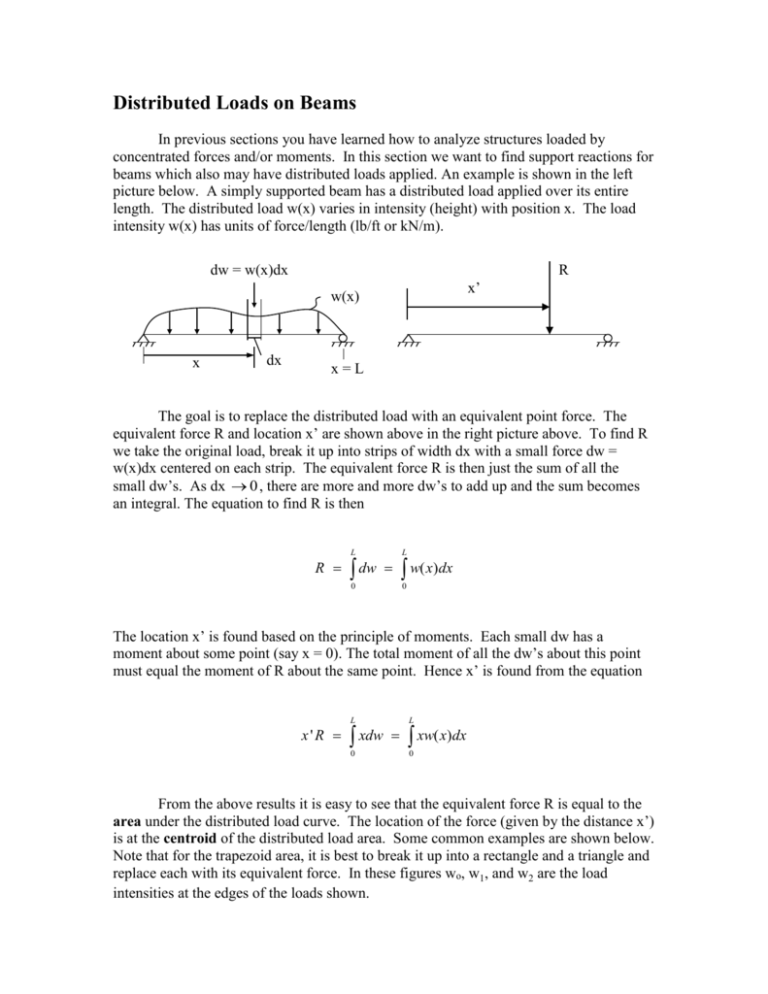
Distributed Loads on Beams In previous sections you have learned how to analyze structures loaded by concentrated forces and/or moments. In this section we want to find support reactions for beams which also may have distributed loads applied. An example is shown in the left picture below. A simply supported beam has a distributed load applied over its entire length. The distributed load w(x) varies in intensity (height) with position x. The load intensity w(x) has units of force/length (lb/ft or kN/m). dw = w(x)dx R x’ w(x) x dx x=L The goal is to replace the distributed load with an equivalent point force. The equivalent force R and location x’ are shown above in the right picture above. To find R we take the original load, break it up into strips of width dx with a small force dw = w(x)dx centered on each strip. The equivalent force R is then just the sum of all the small dw’s. As dx 0 , there are more and more dw’s to add up and the sum becomes an integral. The equation to find R is then L R dw L 0 w( x)dx 0 The location x’ is found based on the principle of moments. Each small dw has a moment about some point (say x = 0). The total moment of all the dw’s about this point must equal the moment of R about the same point. Hence x’ is found from the equation L x'R xdw 0 L xw( x)dx 0 From the above results it is easy to see that the equivalent force R is equal to the area under the distributed load curve. The location of the force (given by the distance x’) is at the centroid of the distributed load area. Some common examples are shown below. Note that for the trapezoid area, it is best to break it up into a rectangle and a triangle and replace each with its equivalent force. In these figures wo, w1, and w2 are the load intensities at the edges of the loads shown. a/2 w0a w0 a 2a/3 w0a/2 w1a (w2- w1)a/2 w0 a w2 w1 a a/2 a/3
